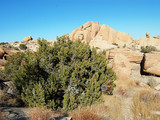Government Grants
Business Grants
Home Owner Programs
Federal Programs
About Us
Forecasting in Support of Adaptive Management
he National Park Service manages the abundance of elk wintering in Rocky Mountain National Park (RMNP) to meet objectives specified in the Elk and Vegetation Management Plan (EVMP).
The EVMP seeks to reestablish a healthy balance between the elk herd and the habitat they use, allowing for the restoration of over browsed aspen and willow communities, increases in biodiversity and maintaining and improving world class wildlife viewing opportunities.
The EVMP specifies that the elk population will be maintained within a target range of 600 ¿ 800 animals.
To achieve these objectives, the population is managed adaptively, based on the science produced, in part, by this partnership.
Each year, the size of the population will be assessed relative to the target range and, based on this assessment, management actions will be chosen to assure that the trajectory of the population remains within that range.
Essential to the success of this approach is a model of elk population dynamics that allows managers to forecast the effect of alternative management actions on the elk population.
In earlier work, Hobbs and Hoeting (2009) and Ketz et al.
(2016) developed forecasting models that predicts the future size of the RMNP elk population based on historic data and current census estimates.
Because the model uses historic data to estimate uncertainties associated with these predictions, it is feasible to specify the probability that the next year¿s population will be within limits specified by park management.
It is also feasible to estimate the probability distribution of the current population size in a way that includes historic as well as current data and that responds to all sources of uncertainty revealed by the full, historical time series of observations of the elk population.
Counts are adjusted for animals that are present within park boundaries but not observed during ground counts using a prior distribution on detection probability obtained from the analysis of Ketz et al.
(2018).
This model provides a firm, statistically defensible basis for adaptive management of the park¿s elk herd.
B.
Project Objectives ¿ Adaptive management will be implemented as follows.
Each year, the size of the park¿s population and its sex and age composition will be estimated using modern census methods developed as part of a previous project.
Ground counts and classification will be conducted three times each month, October ¿ April.
Using the forecasting model, the current year¿s data will be combined with the full time series of data in from previous years to estimate the probability distribution of the current and subsequent year¿s population size.
These probability distributions form the basis for choice of management actions outlined under the EVMP, including culling of animals, aversive conditioning of animals and/or protecting vulnerable habitat with fencing projects.
Moreover, the model¿s predictions from the previous year will be compared with the current, realized population estimate obtained from census.
This comparison may motivate changes in the model to improve the accuracy of its predictions.
If the park collects aerial census data on elk on the winter range, that information may also be used.
This cycle will be repeated annually, allowing continuous improvement in the model and in management.
The EVMP seeks to reestablish a healthy balance between the elk herd and the habitat they use, allowing for the restoration of over browsed aspen and willow communities, increases in biodiversity and maintaining and improving world class wildlife viewing opportunities.
The EVMP specifies that the elk population will be maintained within a target range of 600 ¿ 800 animals.
To achieve these objectives, the population is managed adaptively, based on the science produced, in part, by this partnership.
Each year, the size of the population will be assessed relative to the target range and, based on this assessment, management actions will be chosen to assure that the trajectory of the population remains within that range.
Essential to the success of this approach is a model of elk population dynamics that allows managers to forecast the effect of alternative management actions on the elk population.
In earlier work, Hobbs and Hoeting (2009) and Ketz et al.
(2016) developed forecasting models that predicts the future size of the RMNP elk population based on historic data and current census estimates.
Because the model uses historic data to estimate uncertainties associated with these predictions, it is feasible to specify the probability that the next year¿s population will be within limits specified by park management.
It is also feasible to estimate the probability distribution of the current population size in a way that includes historic as well as current data and that responds to all sources of uncertainty revealed by the full, historical time series of observations of the elk population.
Counts are adjusted for animals that are present within park boundaries but not observed during ground counts using a prior distribution on detection probability obtained from the analysis of Ketz et al.
(2018).
This model provides a firm, statistically defensible basis for adaptive management of the park¿s elk herd.
B.
Project Objectives ¿ Adaptive management will be implemented as follows.
Each year, the size of the park¿s population and its sex and age composition will be estimated using modern census methods developed as part of a previous project.
Ground counts and classification will be conducted three times each month, October ¿ April.
Using the forecasting model, the current year¿s data will be combined with the full time series of data in from previous years to estimate the probability distribution of the current and subsequent year¿s population size.
These probability distributions form the basis for choice of management actions outlined under the EVMP, including culling of animals, aversive conditioning of animals and/or protecting vulnerable habitat with fencing projects.
Moreover, the model¿s predictions from the previous year will be compared with the current, realized population estimate obtained from census.
This comparison may motivate changes in the model to improve the accuracy of its predictions.
If the park collects aerial census data on elk on the winter range, that information may also be used.
This cycle will be repeated annually, allowing continuous improvement in the model and in management.
Related Programs
Cooperative Research and Training Programs Resources of the National Park System
Department of the InteriorObtain Full Opportunity Text:
http://www.grants.gov
Additional Information of Eligibility:
Typically awards will be made to the fellow's graduate institution through the use of a cooperative agreement.
Funds are expected to be available on a competitive basis to qualified graduate students for research within a reserve(s) leading to a graduate degree.
To be eligible, applicants must be citizens or permanent residents of U. S. states or territories, and admitted to or enrolled full-time in a master's or doctoral program at a U. S. accredited university.
It is recommended that applicants should have completed a majority of their graduate coursework prior to the beginning of their fellowship in order to fully participate in the activities.
Students in the final year of their graduate program are not advised to apply for this fellowship.
Federal agencies and employees are not allowed to receive funds under this announcement but may serve as project partners.
If federal agencies are collaborators, applicants are expected to provide details on the planned level of federal engagement in the application.
Examples might include, but are not limited to participating in an advisory capacity or providing facilities for research.
National Estuarine Research Reserve staff are ineligible to submit an application for a fellowship under this announcement.
DOC/NOAA supports cultural and gender diversity and encourages women and minority individuals and groups to submit applications to this program.
In addition, DOC/NOAA is strongly committed to broadening the participation of historically black colleges and universities, Hispanic serving institutions, tribal colleges and universities, and institutions that work in underserved areas.
DOC/NOAA encourages applications involving any of the above institutions to apply.
The lead applicant on any proposal will be responsible for ensuring that allocated funds are used for the purposes of, and in a manner consistent with this program, including any funds awarded to an eligible sub-awardee.
Full Opportunity Web Address:
http://www.grants.gov
Contact:
Agency Email Description:
.
Agency Email:
Date Posted:
2019-06-18
Application Due Date:
Archive Date:
2019-06-28
Social Entrepreneurship
Spotlight
When it Comes to Social Enterprises, Failure is the Best Platform for Innovation

In the world of social enterprises, failure is a cringe-worthy moment nobody wants to talk about. But, social entrepreneurs can benefit from their failures.





